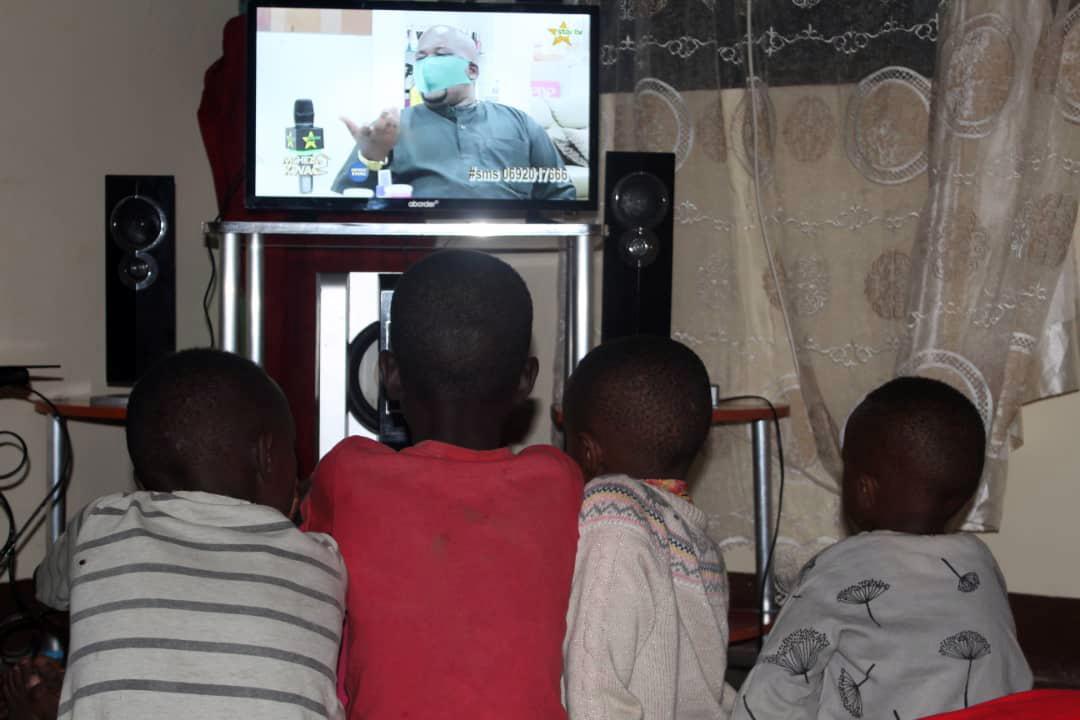
College Park, Md. — COVID-19 worries children from sub-Saharan Africa more than children from other parts of the world, an international study of children’s knowledge, perceptions and stress during the pandemic found. A research team asked questions to more than 4,000 children aged 9-12 in 42 countries during the month of April 2020.
Nearly half of the children surveyed in sub-Saharan Africa expressed being very frightened. “This likely has to do with recent and intimate experience with diseases such as Ebola and malaria,” said University of Maryland School of Public Health Professor Dina Borzekowski, who led the sub-Saharan data collection and analyses.
During the peak of the lockdown, researchers recruited children to answer a short online survey on their perceptions and knowledge regarding the coronavirus, their media use, and strategies for reducing stress. While the sample cannot be representative of the countries or on a global level, there are some interesting insights about how children around the world are experiencing this pandemic.
The Subsaharan part of the study involved 333 children; 86 from the Democratic Democratic Republic of Congo, 116 from Nigeria, 68 from South Africa and 63 Tanzania. The Subsaharan sample composition was similar across countries, with an even split between sexes, and a mean age of 11.1 years (ranging from 9 to 13 years).
Considering the overall global sample, life has changed radically. Among the Subsaharan sample, the most commonly reported change was that children said they no longer attend school. Three quarters of these Subsaharan children noted that they had to stay home. Fifty percent of the children said their parents were “very worried.” Children from this region indicated high levels of concern about COVID-19. Around 43 percent of Subsaharan children were very worried compared to 32 percent of Latin American, 19 percent of Asian,10 percent of European, and 8 percent of North American children. Remarkedly, among Tanzanian children, 72 percent were “very much” worried.
While children from other parts of the world were most fearful that they or family members would get sick, the African children mostly were scared about missing classes and not being able to return to school. “This is a realistic fear,” said Professor Borzekowski, “because for these children, an interruption in schooling can be the end of one’s education.” Globally, all children fretted over not being able to visit grandparents for a long time.
In other regions of the world, children reported greater use of online media, spending much more time streaming videos and using applications like TikTok and SnapChat. In contrast, Subsaharan children indicated that they were turning to traditional media since the COVID-19 crisis had started. Children reported information seeking from television and radio news shows.
Children’s media use differs around the globe due to access disparities. “If a Nigerian or a South African child wants to play games or use an online application, he or she has to borrow a parents’ phone. Given the instability of electricity and the Internet, this is unlikely to happen,” Borzekowski explained.
Many Subsaharan children had correct information about COVID-19, but misconceptions and myths persist. Practically all children knew COVID-19 was a new coronavirus and it originated in China; most could indicate who is at risk and ways to protect oneself. However, a third of these children responded that they thought a foreign government spread COVID-19 as a weapon and 37 percent believed garlic could be preventative.
Mussa L. Chale, the study’s project director in Tanzania, explained, “Children can't identify the difference between real and fake news. They believe everything they hear from everyone.”
The study “Children, Media and COVID-19” and other qualitative studies with children from countries including Syria, Iran and Sierra Leone, will be presented via live-stream on June 7, 2020, at the PRIX JEUNESSE INTERNATIONAL’s International Info Night. The study was made possible by the International Central Institute for Youth and Educational Television at the Bavarian Broadcasting Cooperation, the PRIX JEUNESSE Foundation, and a team of international researchers.
Dr. Borzekowski can be available for interviews upon request.
Media Contact:
Kelly Blake, Assistant Dean, Communications
UMD School of Public Health
kellyb@umd.edu, 301-405-9418
Related Links: